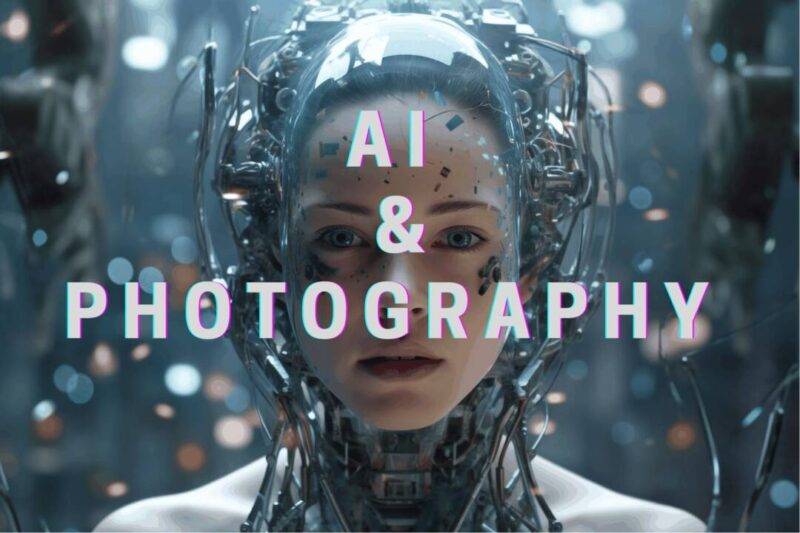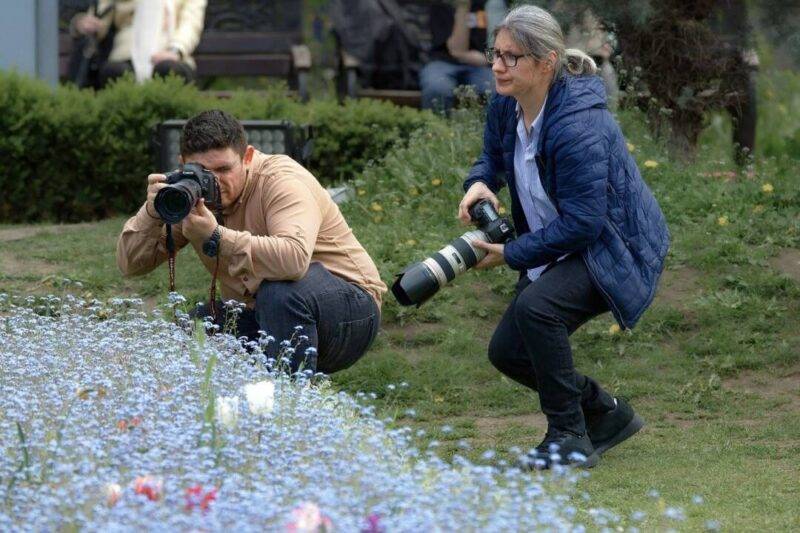Last Updated on May 30, 2023 by PixelPluck
The Transformative Influence of AI: How Artificial Intelligence is Revolutionizing Photography?
In recent years, Artificial Intelligence (AI) has emerged as a groundbreaking force across various industries. One particular domain that has witnessed a remarkable transformation is photography. AI technologies have revolutionized the way images are captured, edited, and analyzed, empowering photographers with new tools and possibilities. This blog post delves into the profound impact of AI on the field of photography and explores the innovative ways in which it is shaping the industry.
Contents
Enhanced Image Recognition and Sorting
AI-powered algorithms have significantly improved image recognition capabilities. With advanced machine learning techniques, AI can automatically categorize and tag images based on their content. This feature enables photographers to efficiently manage their vast collections and locate specific images with ease. By eliminating the need for manual sorting, AI streamlines workflows and saves valuable time for photographers to focus on their creative pursuits.

Let us explore, how AI is transforming the photography industry by streamlining image organization, improving searchability, and enabling efficient workflow management. Let’s dive in!
Intelligent Image Tagging
AI-powered image recognition algorithms have made it possible to automatically tag and label images based on their content. These algorithms use deep learning models trained on massive datasets to accurately recognize and classify objects, people, scenes, and more. For instance, imagine uploading a collection of wildlife photographs to an AI-powered platform. The system can analyze the images and assign relevant tags such as “lion,” “safari,” “wildlife,” and “nature” to each photo. This automated process saves photographers countless hours of manual tagging, allowing them to focus on their creative pursuits.
Advanced Object Detection
AI-driven object detection algorithms have significantly improved the ability to identify specific objects within an image. This technology has found practical applications in photography, particularly in scenarios where the subject needs to be isolated or extracted from the background. For example, an AI-powered photo editing software can detect and select individual elements like people, animals, or landmarks within an image, enabling precise adjustments or removal of unwanted elements.
Facial Recognition for People
Facial recognition algorithms powered by AI have transformed the way photographers manage and organize images of people. By analyzing facial features and patterns, these algorithms can accurately identify individuals and create personalized profiles. For photographers who capture portraits, this technology allows for efficient organization and easy access to photos of specific individuals or groups. Imagine a wedding photographer who can quickly search for all images of the bride or groom across their entire collection, simplifying the process of creating personalized albums or sharing memories with clients.
Content-Based Image Search
AI-powered image recognition has opened up new possibilities for content-based image search. By leveraging deep learning models, search engines and photo management tools can now identify similar images based on their visual attributes. For instance, if a photographer wants to find images with a specific composition, color scheme, or subject matter, an AI-powered search engine can analyze the input image and retrieve visually similar results from a vast database. This capability allows photographers to explore new creative ideas, find inspiration, and discover relevant images faster than ever before.
Streamlined Workflow Management
AI has also played a pivotal role in streamlining photography workflows. Intelligent algorithms can analyze metadata, image quality, and user behavior to automatically sort, filter, and prioritize images. For example, an AI-powered photo management software can identify and group images based on factors such as exposure settings, focal length, or even sentiment analysis. This automation not only saves time but also helps photographers to focus on their best shots and make more informed decisions during post-processing.
Intelligent Auto-Focus and Scene Detection
Gone are the days when photographers had to manually adjust focus settings for each shot. AI has revolutionized autofocus systems by employing sophisticated algorithms that analyze the scene in real-time. These algorithms can detect and track subjects accurately, ensuring sharp and well-focused images. Moreover, AI-powered scene detection algorithms can identify various elements such as landscapes, portraits, and night scenes, automatically adjusting camera settings to optimize image quality.
AI-Assisted Autofocus
AI-assisted autofocus algorithms utilize machine learning techniques to analyze visual data in real time, improving the accuracy and speed of focusing mechanisms. By training on vast datasets containing various scenarios, these algorithms learn to identify and track subjects, ensuring that the focus remains sharp and precise. This technology is particularly valuable in challenging conditions such as low light or fast-moving subjects. With AI-assisted autofocus, photographers can rely on their camera’s intelligent tracking capabilities to maintain focus on subjects, resulting in sharper images and reduced instances of missed shots.
Scene Detection and Optimization
AI-powered scene detection algorithms analyze the composition, lighting conditions, and subject matter of a scene to automatically optimize camera settings. By recognizing different types of scenes, such as landscapes, portraits, or night shots, AI algorithms can adjust exposure, white balance, and other parameters to capture the scene in the most visually pleasing manner. For instance, when the camera detects a sunset landscape, it can adjust settings to emphasize warm tones and enhance the dynamic range, ensuring that the image accurately represents the scene’s beauty. This automation simplifies the process for photographers, allowing them to focus on composition and creativity while the camera handles the technical adjustments.
AI-Assisted Composition and Framing
AI technology is empowering photographers to improve their composition and framing techniques. With the help of advanced algorithms, AI can analyze an image and provide real-time suggestions for better composition, such as the rule of thirds, leading lines, or symmetry. This AI-assisted feature helps photographers enhance their visual storytelling and create more compelling and aesthetically pleasing photographs.

Intelligent Autofocus and Object Tracking
Photographers are often faced with the challenge of capturing moving subjects accurately. AI-powered autofocus systems and object-tracking algorithms have significantly improved the ability to focus on and track subjects in real time. Through machine learning, cameras equipped with AI can detect and prioritize subjects, maintaining sharp focus and reducing the likelihood of missed shots. This technology is particularly useful in sports photography, wildlife photography, and capturing fast-paced events.
Image Enhancement and Restoration
AI algorithms have brought remarkable advancements in image enhancement and restoration. Using deep learning techniques, AI can analyze and process images to improve their quality, remove noise, and enhance details. This feature has proven invaluable for photographers looking to salvage poorly exposed or low-resolution images. AI can also restore old and damaged photographs, bringing them back to life with enhanced clarity and color accuracy.
Automated Post-Processing
Post-processing plays a crucial role in photography, allowing photographers to refine their images and create a desired mood or style. AI-driven automated post-processing tools have simplified this process, reducing the time and effort required. These tools utilize machine learning algorithms to analyze vast datasets of professionally edited photographs, learning the editing styles and preferences of expert photographers. With this knowledge, AI can automatically apply edits to images, saving photographers valuable time while achieving consistent and high-quality results.
AI-Powered Image Recognition and Categorization
Organizing and managing a large collection of photographs can be a daunting task. AI-powered image recognition and categorization tools can automatically analyze images and assign relevant tags and keywords based on the content. This feature enables photographers to easily search and retrieve specific images from their archives, streamlining workflow and improving productivity. Moreover, AI can identify specific objects or scenes within an image, aiding in stock photography and content creation.
Virtual Reality (VR) and Augmented Reality (AR)
AI is paving the way for immersive visual experiences through the integration of virtual reality and augmented reality technologies. By combining AI and photography, it becomes possible to create realistic virtual environments or overlay digital elements onto real-world scenes. This fusion of AI, photography, and VR/AR opens up new opportunities for storytelling, interactive exhibitions, and innovative marketing campaigns.
The impact of AI on the field of photography is undeniable. From enhancing composition and focus accuracy to streamlining post-processing and revolutionizing image recognition, AI has significantly expanded the possibilities for photographers. As technology continues to advance, we can expect even more exciting developments in the future, offering new creative avenues and redefining the boundaries of visual innovation.
Embracing AI in photography can unlock a world of possibilities for both professionals and enthusiasts, making the art form more accessible and pushing the boundaries of what is visually possible.es for photographers to create realistic virtual environments, overlay digital elements onto real-world scenes, and explore innovative storytelling and marketing opportunities.
By leveraging AI technology, the field of photography has experienced significant advancements in various aspects, from composition and focus accuracy to image enhancement and automation. These changes have revolutionized the way photographers capture, edit, and organize their images, pushing the boundaries of visual innovation and opening up new creative possibilities.